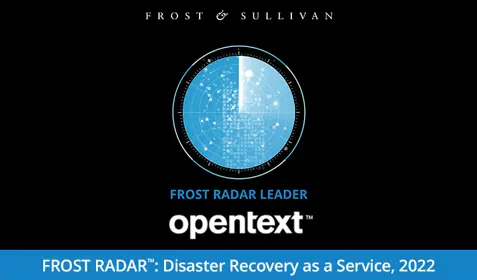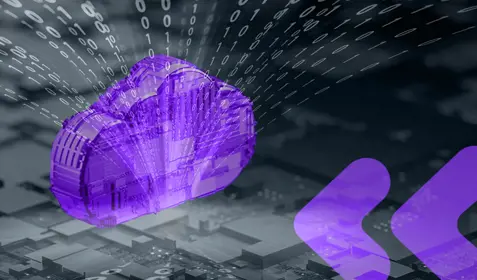The need for disaster recovery is greater than ever
IT is not for the faint of heart. You are faced with bugs, power and network failures, natural disasters, viruses and malware. Today’s top challenge is the threat of a ransomware attack – and your organization is a prime target. Ransomware is mainly a small and medium business problem: 71.4% of companies impacted by ransomware are SMBs (11 to 1,000 employees).1
Worse yet, most organizations are not adequately prepared to respond to a disaster or ransomware attack. Gartner found that a full 72% of organizations are not well positioned with regard to disaster recovery capabilities.2
The statistics might seem disheartening – but this isn’t the time to throw your hands up and walk away. Rather, now is the best time to roll up your sleeves and implement a disaster recovery (DR) solution. Despite what you may have experienced in the past, SMBs have more DR options today than ever before. But unfortunately, misinformation about DR persists. Let’s dispel three disaster recovery myths and learn why now is the time for DR.
- Myth: Discover recovery is only for the enterprise.
Fact: Traditionally, DR required an offsite location with redundant hardware systems and software – the sort of setup that only a large enterprise could afford. But technology advancements and the availability of cost-effective public clouds allow today’s small and medium businesses to enjoy the same level of protection with Disaster Recovery as a Service (DRaaS). DRaaS eliminates the need to build and maintain a secondary DR site. And when a physical DR site is not needed, the expensive administration, upgrade requirements and maintenance contracts are unnecessary as well. Today, SMBs can utilize the cloud to implement a cost-effective DRaaS solution that meets their recovery point objectives (RPO) and recovery time objectives (RTO).
- Myth: Our backup product is enough to keep us safe.
Fact: A backup solution is a must-have these days, but it’s not a silver bullet. For certain use cases, you need disaster recovery as well. Why? Because traditional backup does not provide the rapid RPO and RTO needed for true disaster recovery – and is not designed to handle large-scale data loss. Gartner offers a helpful distinction between backup solutions and disaster recovery3:
- Backup and recovery software products are designed to capture a point-in-time copy (i.e., a backup) of a workload and write the data out to a secondary storage device for the purpose of recovering this data in case of loss.
- Disaster recovery (DR) encompasses methods and procedures for returning a data center to full operation quickly after a catastrophic interruption.
When disaster strikes, whether it’s a network or power outage, human error, sabotage, a natural disaster or a ransomware attack, disaster recovery gives you a secondary site to run on while you restore your primary site.
- Myth: Disaster recovery is expensive.
Fact: In the past, the fastest way to recover in the event of a disaster was to mirror the workload on another server – often at a secondary location. But for most businesses, the redundant hardware, data center space and additional IT resources were too costly to make this a viable option. That left many small and medium businesses unprepared in the event of a disaster. The modern disaster recovery as a service (DRaaS) approach, however, eliminates the secondary site expenses for:
- Owning or leasing space
- Monthly costs associated with power, cooling and internet bandwidth
- Purchase or lease of servers, storage and network equipment
- Travel to and from data centers or onsite staff at the secondary data center
For SMBs today, DRaaS is usually a great fit, as it offers the benefits of a cloud-based solution:
- Delivers the SLAs that your organization requires
- Is cost-effective, since it eliminates the expenses associated with having a secondary, physical site on standby
- Provides simplicity, making it easy for your team to set up and manage the solution and restore data and business operations quickly in an emergency
- Offers non-disruptive, unlimited self-service testing and reporting
Today’s choice: Disaster recovery as a service
Today, instead of living with the risk of unexpected downtime, small and medium businesses can implement DRaaS to ensure that their organization will keep running after a disaster.
Carbonite Recover provides disaster recovery as a service (DRaaS). It reduces the risk of unexpected downtime by securely replicating critical systems to the cloud, ensuring that an up-to-date copy is available for failover when needed. With non-disruptive, self-service tests, failover reports and professional services support, organizations can have confidence in their data protection strategy.
For organizations that are seeking a managed service approach, Carbonite Recover can be paired with Carbonite® Managed Disaster Recovery service. This white-glove service includes not only the initial setup and deployment of Carbonite Recover software but also provides ongoing management and validation that your disaster recovery solution is functioning correctly, so you can feel confident that your business can be brought online seamlessly in the event of a disaster.
Carbonite Recover provides the ability to respond on demand to all of your workload protection and recovery needs with a single, easy-to-manage platform. Best of all, Carbonite supports even the most scalable hypervisor and cloud computing technologies by enabling many-to-one protection of physical, virtual and cloud-based server workloads.
Footnotes
- Coveware, Ransomware Threat Actors Pivot from Big Game to Big Shame Hunting, Quarterly Report, May 3, 2022
- Gartner Research, Market Guide for Disaster Recovery as a Service, Analyst(s): Ron Blair, Lisa Pierce, Jeffrey Hewitt, Published: 25 June 2020.
- Gartner, Information Technology Glossary








